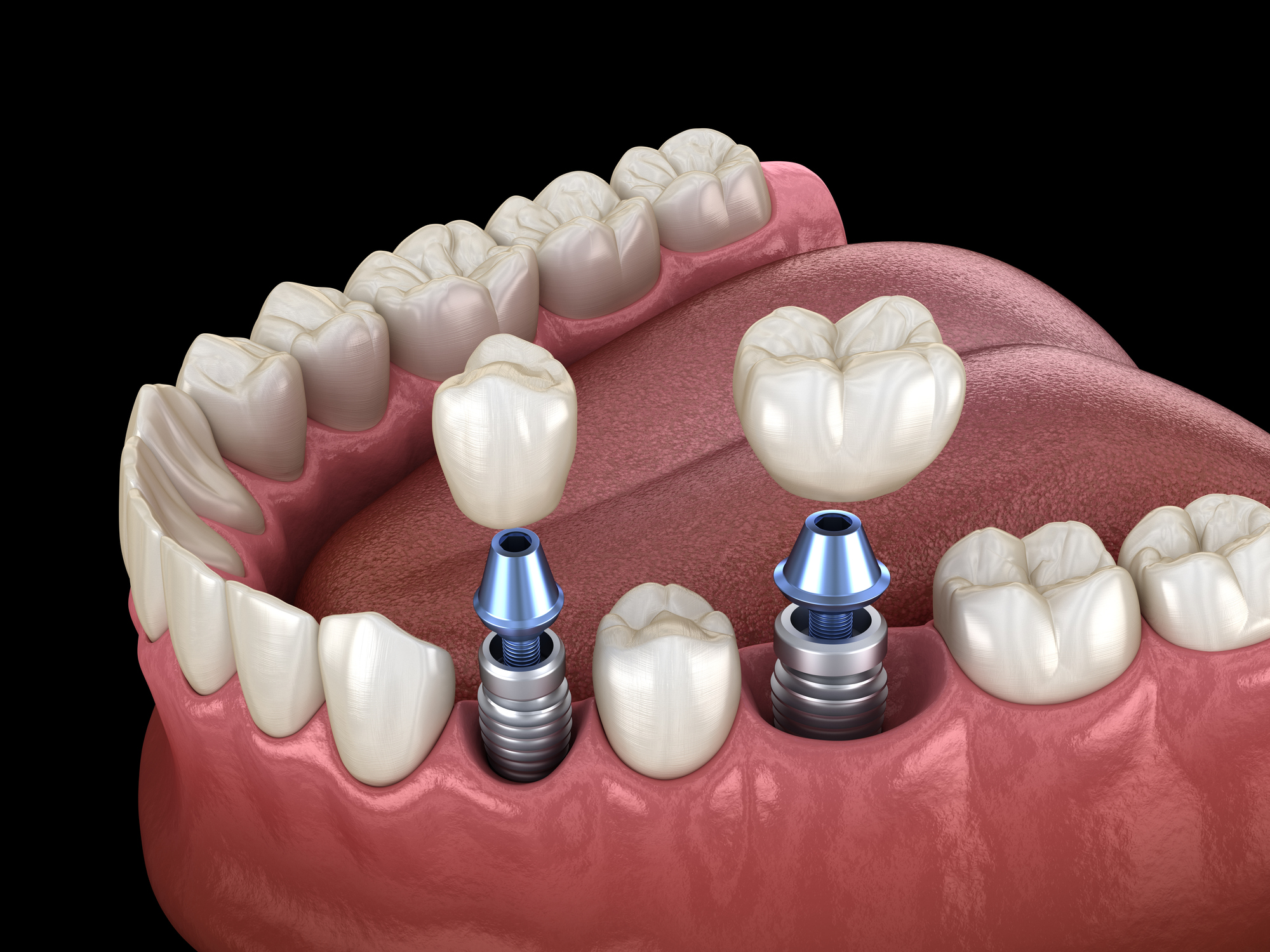The Buzz on Dental Sense
The Buzz on Dental Sense
Blog Article
A Biased View of Dental Sense
Table of ContentsThe 4-Minute Rule for Dental SenseDental Sense Things To Know Before You Get This6 Easy Facts About Dental Sense ExplainedThe 20-Second Trick For Dental Sense
are medical gadgets surgically dental implanted into the jaw to restore a person's capacity to eat or their look. They give support for fabricated (fake) teeth, such as crowns, bridges, or dentures. When a tooth is lost as a result of injury or illness, an individual can experience difficulties such as rapid bone loss, malfunctioning speech, or adjustments to chewing patterns that result in discomfort.Oral dental implant systems contain an oral implant body and dental implant abutment and may also consist of an abutment addiction screw. Front tooth filling. The dental implant body is surgically inserted in the jawbone instead of the tooth's origin. The dental implant joint is normally connected to the dental implant body by the joint fixation screw and extends through gum tissues right into the mouth to sustain the connected man-made teeth
(https://forums.hostsearch.com/member.php?274218-dentalsense1)Framework of The Oral Implant System choosing oral implants, speak to your dental company regarding the prospective benefits and dangers, and whether you are a prospect for the procedure. Points to think about: Your total health is an important element in determining whether you are a great candidate for oral implants, for how long it will certainly require to heal, and the length of time the dental implant may remain in location.
Smoking might influence the recovery procedure and lower the long-term success of the implant. The healing procedure for the dental implant body may take numerous months or longer, during which time you typically have a temporary abutment in location of the tooth. the dental implant treatment: Very carefully follow the dental hygiene guidelines offered to you by your dental service provider.
The Single Strategy To Use For Dental Sense
Implant failing can lead to the need for an additional medical treatment to repair or change the dental implant system. Recovers the capability to chew Brings back cosmetic look Aids keep the jawbone from shrinking as a result of bone loss Preserves the health and wellness of the bordering bone and gums Aids keep adjacent (nearby) teeth steady Enhances quality of life Damages to bordering all-natural teeth during dental implant placement Injury to the surrounding tissues during surgical treatment, such as sinus opening Injury during surgery (for example, crack of surrounding jawbone) Poor feature, such as feeling like the teeth do not attack together typically A sensation that the tooth hangs or turning in place arising from an abutment screw loosening Implant body failing (looseness of the implant body) as a result of systemic infection, which may be extra most likely in patients with unrestrained diabetes as a result of local infection in bone and gums sustaining the implant body due to postponed healing, which might be more probable in patients who smoke Problem cleaning up the gum tissues around the implant, leading to inadequate oral hygiene Neglected periodontal disease Post-surgical pins link and needles due to nerve impingement or damage Constantly alert wellness treatment providers and imaging professionals that you have oral implants before any magnetic resonance imaging (MRI) or x-ray procedures.
FDA is not knowledgeable about any type of damaging events reported for MRI or x-ray procedures with oral implants. Dental implants systems are generally constructed from products that adhere to worldwide agreement standards of the International Company for Standardization (ISO) or ASTM International. These criteria have details of what makes a risk-free material.

A dental implant is a framework that replaces a missing out on tooth. With screw-like gadgets, the surgeon inserts a dental implant right into the jawbone, and it serves as a support for a man-made tooth, called a crown. A gadget called a joint attaches the synthetic tooth to the dental implant. The crown is personalized to fit the person's mouth and match the shade of their teeth.
How Dental Sense can Save You Time, Stress, and Money.
Some people are not eligible for dental implant surgical treatment. It is for oral cosmetic surgeons to operate people with: acute illnessuncontrollable metabolic diseasebone or soft tissue illness or infectionIf these issues are solved, an individual can have the surgery. In, oral doctors refrain from operating on individuals with: If individuals with any of the above go through oral implant surgery, there is a higher threat of the dental implant failing.

Dental implant surgical treatment is a customized procedure. It's not the exact same for every person. But the adhering to gives a general review of what you can anticipate your dental professional, dental surgeon, periodontist or prosthodontist to do: Position the implant operatively. Give you time to heal. Attach the message and last crown, bridge or denture.
Next, your specialist will carefully put the oral implant into your jaw. If your implant is near the front of your mouth, your dentist will make a momentary tooth for you to use till you heal.
Some Known Factual Statements About Dental Sense
Your company can inform you what to expect in your circumstance. Throughout the healing phase, your jawbone must fuse to the oral implant. This process, called osseointegration, is vital for stability and long-term success. This procedure can take anywhere from 3 to 9 months. Sometimes, it might take much longer.
As soon as your dental implant heals, your dental expert can connect the joint (tiny connector blog post) and your last restoration (crown, bridge or denture). This generally takes concerning one hour to complete and may call for a 2nd small surgery. You shouldn't really feel any kind of pain throughout your oral implant procedure because your provider will certainly use drug to numb your periodontals.
Report this page